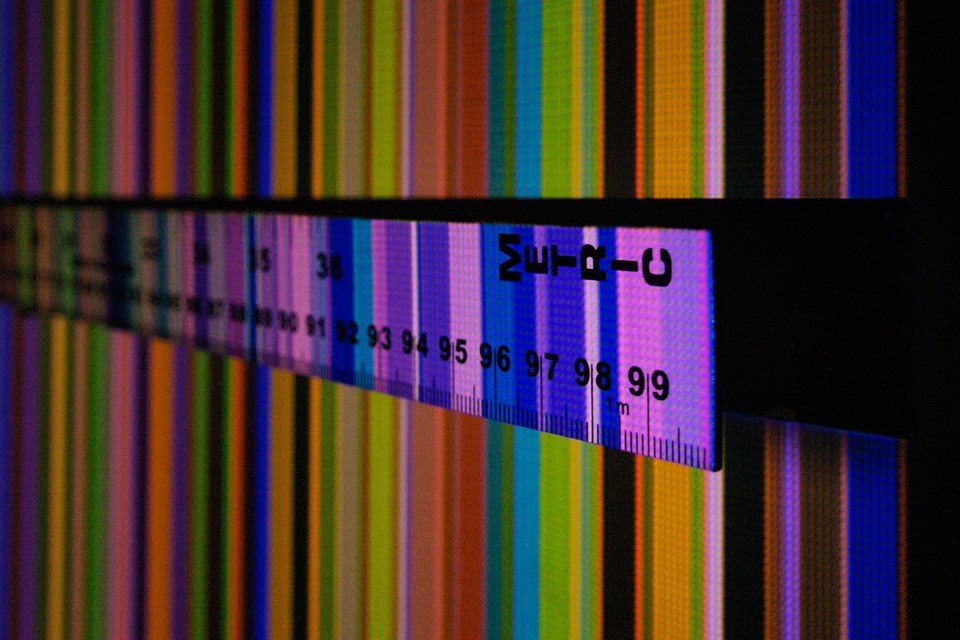A group of artists took a deep dive into how we measure time, light, colours, seasons and the movement of celestial bodies — and came up with striking works of art that are now part of a brand-new show in New Westminster.
Called "Measure," the exhibition opens on Saturday, Sept. 23 at the New Media Gallery (777 Columbia St.) with artist talks and an opening reception between 1 and 4:30 p.m., at the Anvil Theatre.
"The act of witnessing, questioning and documenting the movement of day into night; the change of seasons; the cyclical movement of sun, moon, and stars…these delineations have connected us intimately to our environment," reads the show's description.
They are part of our biology — "hard-coded in our DNA as circadian rhythms," the description adds.
The exhibition features Montreal-based artist Matthew Biederman's installation that measures and tracks an ever-changing colour spectrum.
The work explores "the limits of human colour perception and our ability to resolve minute variations in the world around us."
Other works include that by Paris-based Félicie d'Estienne d'Orves that reflects the length of time it takes light to reach earth from the sun and from Venus, Alan Storey's sculptural installation of 60 clocks that together help measure and track the relative movement and perception of time, and a site-specific work by James Nizam that tracks the movement of the moon around the earth.
Also part of the exhibition is a work by U.K. artist duo Ruth Jarman and Joe Gerhardt (who go by the name Semiconductor) that uses time-lapse photography and astronomical tracking to plot the sun’s trajectory across a series of landscapes, and a digital animation/video by Annette S. Lee, which captures the rhythm and change of seasons.
The exhibition reflects on "how one thing can be understood to influence another… and how human bodies and technical apparatus measure, document and allow us to perceive unfolding events as part of an embodied experience."
And more importantly, it promises to have the viewers question: "How will technology continue to affect our tangible, corporeal connections with the natural world?"





